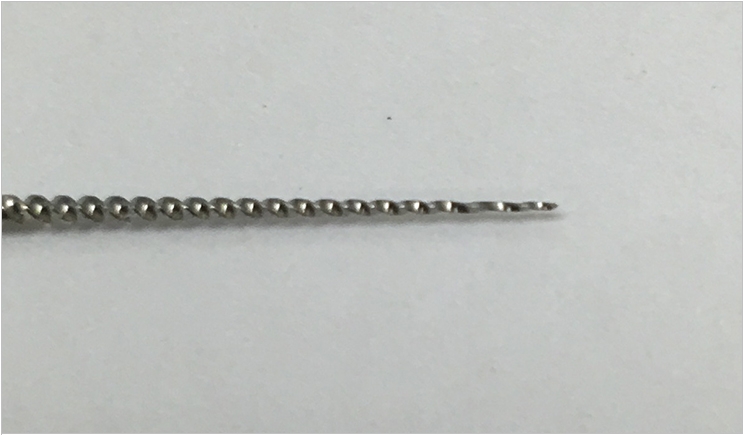
Before you decide which NiTi file to use in your practice—or which you would want used on you if you were the patient—there are several factors to consider.
One of the most nerve-wracking things about performing root canals is file breakage. There is no worse feeling than placing a file in a tooth and having it come out shorter. This is especially a matter of concern when using mechanized NiTi files. So, there’s no arguing that file separation anxiety is important.
But what if your NiTi file unwinds? Or unwinds easily? Is that a reason for concern? Absolutely. An unwound endo file has failed its purpose, becomes obsolete, and, of course, would require replacement. More importantly, the unwinding of NiTi files is a “red flag” and may be a precursor for file separation. What does that mean to us wet-fingered dentists? Anxiety!
In turn, it’s no wonder that one of the most widely researched topics in endodontics is NiTi file performance as related to fracture resistance. The recent introduction of reciprocating NiTi files has further increased the curiosity into their performance both on their own and compared to traditional rotary NiTi files. Interestingly, studies have shown that NiTi files used in reciprocating motion, versus rotational, have extended lifespans.
The desire for the ultimate NiTi file and the competition between endodontic companies to promote their files has led many of them to market the (arguably) 2 most important issues in NiTi file usage: file separation and (low) file costs. However, the one quality that is rarely if ever promoted is resistance to file unwinding.
Although file separation is the worst thing that could happen, in 2017, there is no excuse for NiTi files to unwind, or at least unwind easily. One should consider file unwinding to be nearly as bad as file separation since both mean that the file has failed to perform as intended. Furthermore, file unwinding would require file replacement. More file replacements mean increased procedure time and increased anxiety.
I raised the point of file cost since, like you, I pay for my instruments and would love to find a file that is less expensive and doesn’t unwind—or at least doesn’t unwind easily. But well-performing files and low file costs don’t always go hand in hand. Hence, inexpensive but potentially poor performing files that require more replacements may not be cheaper after all.
Before you decide on a NiTi file, then, please also consider how resistant the file is to unwinding.
If you are interested in learning more about this and other endodontic topics, then I welcome you to the Chicago Midwinter Meeting. I’ll be presenting there on “Root Canals Done Faster, Better & Safer: A Practical Course for General Dentists” and “Controversies & Advances in Endodontics That Every Dentist Should Know,” without bias, on Friday, February 24.
Dr. Haas reports no disclosures.
 Dr. Haas is a Certified Specialist in Endodontics and is extensively involved in continuing education to dentists. He is a Fellow of the Royal College of Dentists of Canada and is on staff at the University of Toronto Faculty of Dentistry and the Hospital for Sick Children. He maintains a full-time private practice limited to endodontics and microsurgery in Toronto. Dr. Haas can be reached at haasendoeducation.com.
Dr. Haas is a Certified Specialist in Endodontics and is extensively involved in continuing education to dentists. He is a Fellow of the Royal College of Dentists of Canada and is on staff at the University of Toronto Faculty of Dentistry and the Hospital for Sick Children. He maintains a full-time private practice limited to endodontics and microsurgery in Toronto. Dr. Haas can be reached at haasendoeducation.com.
Related Articles
Antibiotics May Do More Harm Than Good
Simple Techniques for Dental Dam Applications
Root Canals Aren’t What They Used to Be











